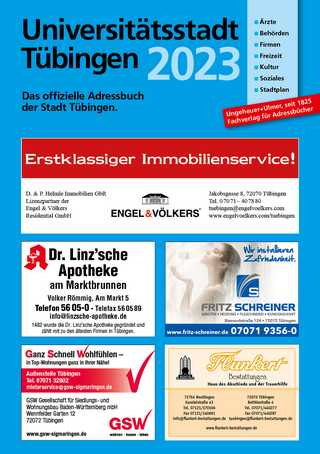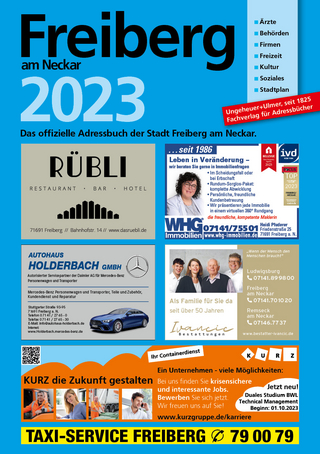
Communication in Everyday Life
SAGE Publications Inc (Verlag)
978-1-5063-1516-4 (ISBN)
- Keine Verlagsinformationen verfügbar
- Artikel merken
This text remains the only introductory communication book to explore fundamental concepts, theories and skills aimed at helping readers to apply material to their personal and professional lives – with a thematic integration of the relational perspective and a focus on demonstrating its direct relevance to their own everyday communication. Readers develop a strong foundation in communication concepts, theory and research, as well as practical communication skills such as listening, critical thinking, using technology to communicate, understanding nonverbal communication, creating persuasive strategies and managing group conflict.
Steve Duck taught in the United Kingdom before taking up the Daniel and Amy Starch Distinguished Research Chair in the College of Liberal Arts and Sciences at the University of Iowa. He has been a professor of communication studies, an adjunct professor of psychology, a former Dean’s Administrative Fellow and is now Chair of the Rhetoric Department. He has taught interpersonal communication courses, mostly on relationships but also on nonverbal communication, communication in everyday life, construction of identity, communication theory, organizational leadership, and procedures and practices for leaders. More recently he has taught composition, speaking and rhetoric, especially for STEM students. By training an interdisciplinary thinker, Steve has focused on the development and decline of relationships, although he has also done research on the dynamics of television production techniques and persuasive messages in health contexts. Steve has written or edited 60 books on relationships and other matters and was the founder and, for the first 15 years, the Editor of the Journal of Social and Personal Relationships. His book Meaningful Relationships: Talking, Sense, and Relating won the G. R. Miller Book Award from the Interpersonal Communication Division of the National Communication Association. Steve co-founded a series of international conferences on personal relationships. He won the University of Iowa’s first Outstanding Faculty Mentor Award in 2001 and the National Communication Association’s Robert J. Kibler Memorial Award in 2004 for “dedication to excellence, commitment to the profession, concern for others, vision of what could be, acceptance of diversity, and forthrightness.” He was the 2010 recipient of the UI College of Liberal Arts and Sciences Helen Kechriotis Nelson Teaching Award for a lifetime of excellence in teaching and in the same year was elected one of the National Communication Association’s Distinguished Scholars. He hopes to sit on the Iron Throne and be famous. David T. McMahan has taught courses that span the discipline of communication, including numerous courses in interpersonal communication and personal relationships, media and technology, communication education, theory, and criticism. McMahan’s research interests also engage multiple areas of the discipline with much of his research devoted to bridging the study of relationships, technology, and media. This work encompasses discussions of media and technology in everyday communication, the incorporation of catchphrases and media references in everyday communication, and the relational aspects of the Internet and digital media. His diverse research experiences also include studies on symbolic displays of masculinity and violence in rural America, media-based political transformations of the world’s nation-states, the reporting of mass-murder suicide in The New York Times, and primetime animated series. In addition to authoring numerous books, his work has appeared in such journals as Review of Communication, Communication Education, and Communication Quarterly, as well as edited volumes. A tremendously-active member of the discipline, McMahan’s endeavors include serving on a number of editorial review boards, serving as editor of the Iowa Journal of Communication, and serving as president of the Central States Communication Association. He has also received multiple awards for his work in the classroom and has been the recipient of a number of public service and academic distinctions, including being named a Centennial Scholar by the Eastern Communication Association. He hopes to someday win the singles championship at Wimbledon.
Preface
A Personal Note to Readers
Acknowledgments
About the Authors
PART I. COMMUNICATION FOUNDATIONS
Chapter 1 An Overview of Communication
Everyday Communication and the Relational Perspective
What Is Communication?
Communication Is Symbolic
Communication Requires Meaning
Communication Is Cultural
Communication Is Relational
Communication Involves Frames
Communication Is Both Presentational and Representational
Communication Is a Transaction
Focus Questions Revisited
Key Concepts
Questions to Ask Your Friends
Media Connections
Chapter 2 Histories and Contexts of Communication
The Challenges of Writing History
The Development of a Discipline
The Emergence of Areas of Study
Coming Together (Kind of) as Communication Studies
Future of Communication and the Relational Perspective
Methods of Studying Communication
Social Scientific Approach
Interpretivist Approach
Critical Approach
Improving Communication Studies Through the Relational Perspective
Where Next?
Focus Questions Revisited
Key Concepts
Questions to Ask Your Friends
Media Connections
PART II. COMMUNICATION SKILLS
Chapter 3 Identities, Perceptions, and Communication
Do People Have Core Selves?
Identities and Perceptions
Identities and Communication
Transacting Identity and Other People
Focus Questions Revisited
Key Concepts
Questions to Ask Your Friends
Media Connections
Chapter 4 Verbal Communication
How Is Verbal Communication Symbolic?
Verbal Communication Involves Meaning
Verbal Communication Is Relational
Verbal Communication Is Cultural
Verbal Communication and Frames
Verbal Communication Is Presentational
Functions of Verbal Communication
Relationships and Everyday Talk
Focus Questions Revisited
Key Concepts
Questions to Ask Your Friends
Media Connections
Chapter 5 Nonverbal Communication
Misconceptions About Nonverbal Communication
What Is Nonverbal Communication?
The Functions of Nonverbal Communication
Types of Nonverbal Communication
Focus Questions Revisited
Key Concepts
Questions to Ask Your Friends
Media Connections
Chapter 6 Culture and Communication
How Can Culture Be Identified and Studied?
Structure-Based Cultural Characteristics
Transacting Culture
Focus Questions Revisited
Key Concepts
Questions to Ask Your Friends
Media Connections
Chapter 7 Listening
Why Is Listening Important?
Active Listening
Engaged and Relational Listening
Critical Listening
Recognizing and Overcoming Listening Obstacles
Focus Questions Revisited
Key Concepts
Questions to Ask Your Friends
Media Connections
PART III. COMMUNICATION CONTEXTS
Chapter 8 Personal Relationships
What Are Personal Relationships?
Benefits of Personal Relationships
Initiating Relationships: The Relationship Filtering Model
Transacting and Maintaining Personal Relationships
Coming Apart
Focus Questions Revisited
Key Concepts
Questions to Ask Your Friends
Media Connections
Chapter 9 Family Communication
Families as . . .
Change and Development in Family Processes
Families Communicate!
Focus Questions Revisited
Key Concepts
Questions to Ask Your Friends
Media Connections
Chapter 10 Groups and Leaders
What Is a Group?
Characteristics of Groups
Group Development and Decision Making
Group Decision Making Is About Relationships
Leadership
Focus Questions Revisited
Key Concepts
Questions to Ask Your Friends
Media Connections
Chapter 11 Communication in the Workplace
Learning About the Workplace
Going to Work: The Workplace as a Special Frame
The Workplace as a Culture
The Workplace as Relationships
Focus Questions Revisited
Key Concepts
Questions to Ask Your Friends
Media Connections
Chapter 12 Health Communication
Patient and Provider Relationships
Social Networks and Health
Media, Technology, and Health
Focus Questions Revisited
Key Concepts
Questions to Ask Your Friends
Media Connections
Chapter 13 Technology and Media in Everyday Life
Perceptions of Technology and Media
The Relational Uses of Technology and Media
Smartphones: Constructing Identities and Relationships
Constructing Identities and Maintaining Relationships Online
Focus Questions Revisited
Key Concepts
Questions to Ask Your Friends
Media Connections
Chapter 14 Public and Personal Influence
Public Address and Relating to Audiences
Sequential Persuasion
Emotional Appeals
Compliance Gaining
Focus Questions Revisited
Key Concepts
Questions to Ask Your Friends
Media Connections
Chapter 15 Interviewing
Preparing for an Interview
Interviews
Pre-Interview Responsibilities
Beginning an Employment Interview
Asking the Questions During an Employment Interview
Answering the Questions During an Employment Interview
Concluding an Employment Interview
Post-Interview Responsibilities
Focus Questions Revisited
Key Concepts
Questions to Ask Your Friends
Media Connections
Glossary
References
Index
| Erscheinungsdatum | 31.01.2017 |
|---|---|
| Verlagsort | Thousand Oaks |
| Sprache | englisch |
| Maße | 203 x 254 mm |
| Gewicht | 690 g |
| Themenwelt | Sozialwissenschaften ► Kommunikation / Medien ► Allgemeines / Lexika |
| Sozialwissenschaften ► Kommunikation / Medien ► Kommunikationswissenschaft | |
| ISBN-10 | 1-5063-1516-X / 150631516X |
| ISBN-13 | 978-1-5063-1516-4 / 9781506315164 |
| Zustand | Neuware |
| Haben Sie eine Frage zum Produkt? |
aus dem Bereich


